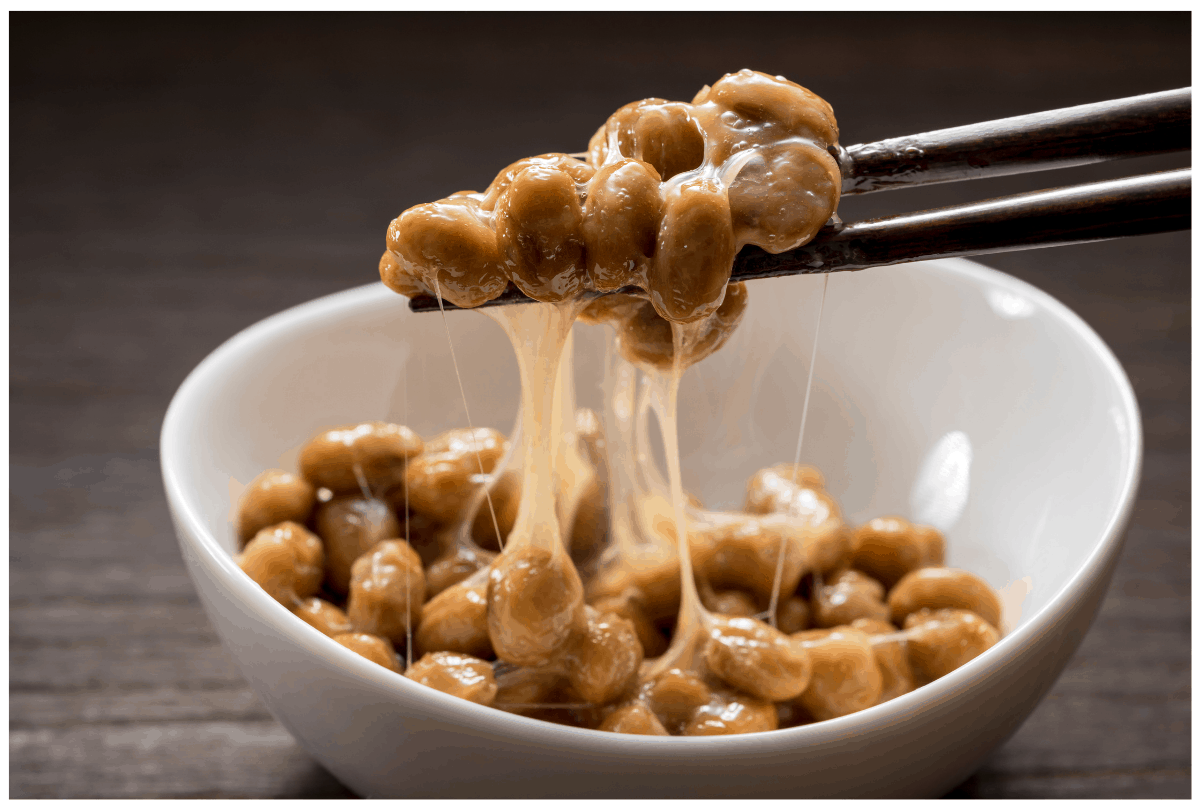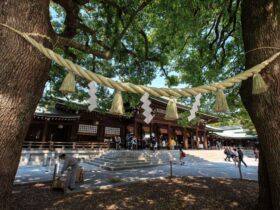Natto is a traditional Japanese food product prepared from fermented soybeans and Bacillus subtilis. It’s frequently served during breakfast. It’s usually eaten with karashi mustard, soy or tare sauce, and Japanese bunching onion.
Natto is a popular Japanese superfood, but if you are not entirely familiar with natto then it can be quite a shock to the senses. Even with some Japanese people, the food is very divisive, and much like marmite in Britain and vegemite in Australia, people either love it or hate it.
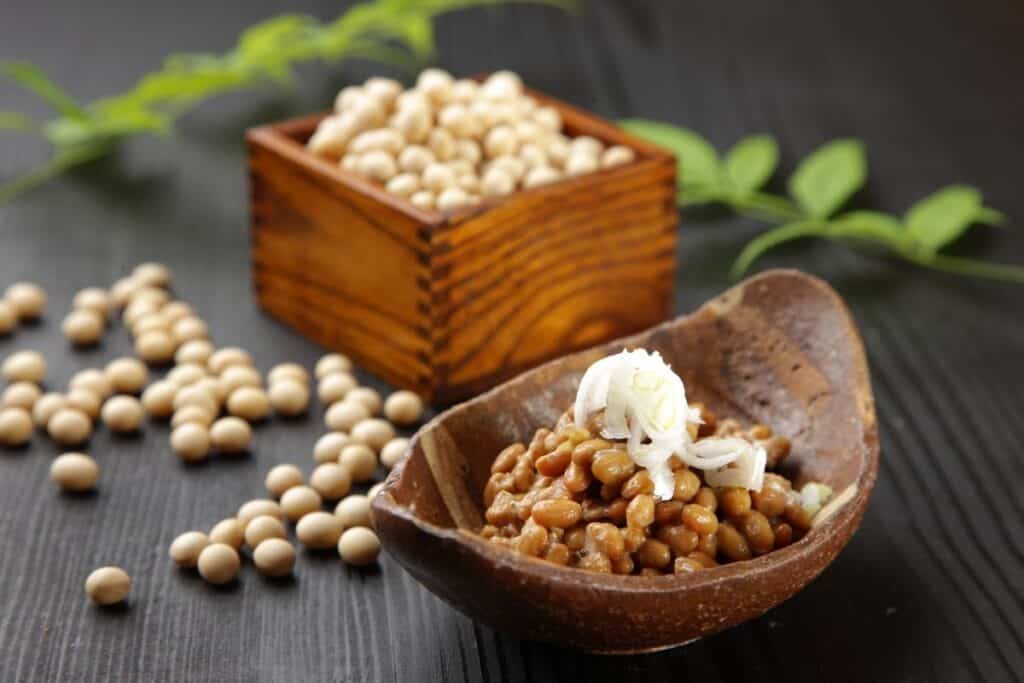
However, not only is natto considered by some Japanese a delicious breakfast food but it also has a lot of good health benefits that may convince some people to eat it in spite of the smell and appearance.
What exactly is natto?
Natto itself is a dish made of fermented soybeans. Using a bacteria called “Bacillus subtilis” the soybeans are fermented and left to ferment for roughly one week, during which time the carbohydrates in the beans turn into either alcohol or acid.
Although soybeans can be fermented using either bacteria or yeast, natto is always fermented using “Bacillus subtilis”.
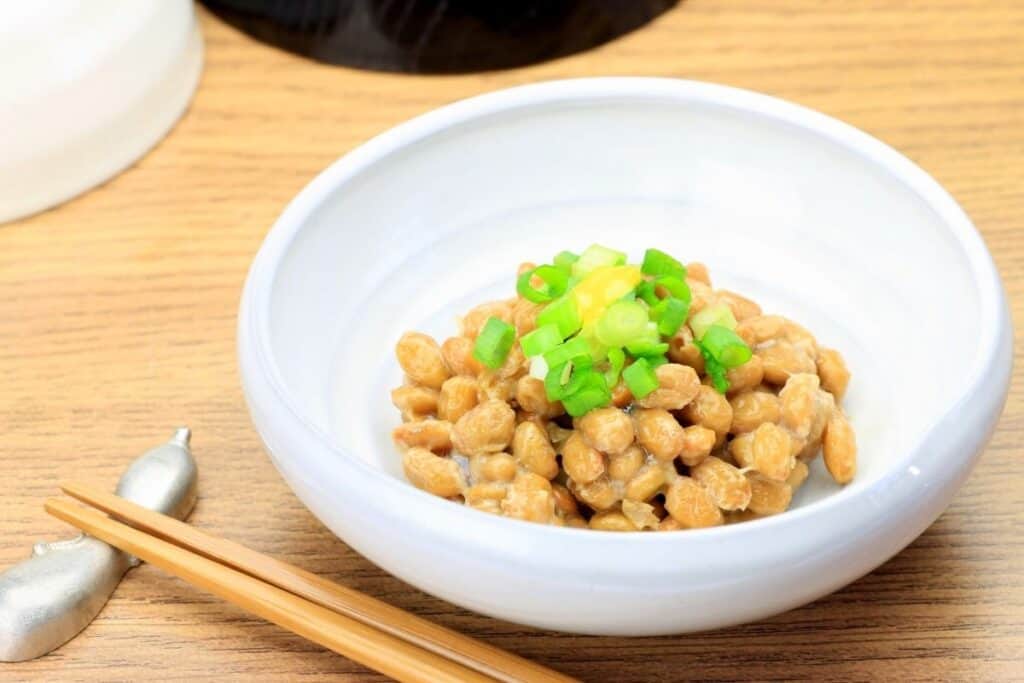
When making natto there are two different types of soybean to choose from: large or small. If you are a beginner making natto then you should probably start out using large soybeans as they become less sticky when mixed. Or, if you would simply prefer your natto a little less sticky opt to buy one made from larger soybeans.
Alternatively, if for you it is the sticker then better, look for the natto dish called “hikiwari”. This dish uses soybeans that have been crushed before being fermented, allowing them more surface area for the bacteria to adhere to. This results in the strongest-tasting and sickest type of natto possible.
The history of natto
The dish natto is said to have actually come about accidentally. However, there are many different stories about the origin of natto. The main idea is that accepted is that natto originated when people accidentally fermented soybeans that were stored in the straw where the bacteria naturally resided.

For example, one origin story is that in 1083 in Mito city (Ibaraki prefecture) the military leader Minamoto no Yoshiie boiled soybeans as food for their horses and then wrapped whatever was leftover in straw in order to easily transport the soybeans with them on their journey.
Then, when they reached their next destination, they opened the straw to feed the horses and discovered that the soybeans had fermented and were sticky.
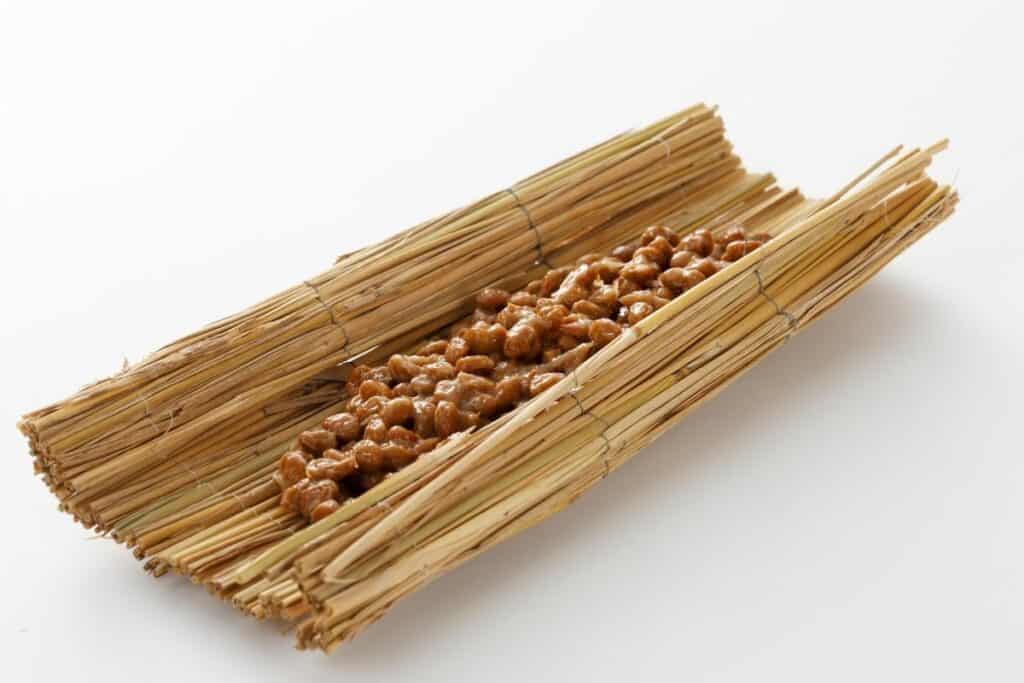
Out of curiosity, the soldiers are said to have tasted the soybeans and actually ended up enjoying them. They then supposedly shared their find with the commander who also ended up enjoying them. It is even said that the word for the dish (natto) comes from the meaning of “beans for the general”.
The health benefits of natto
Japan has one of the highest life expectancies in the world and many people attribute this to their well-balanced diet that is rich in healthy foods.
Additionally, many people believe that eating natto is the key to living a long and healthy life as people who eat natto regularly can be found to have a better liver function and less bone loss than those who do not.
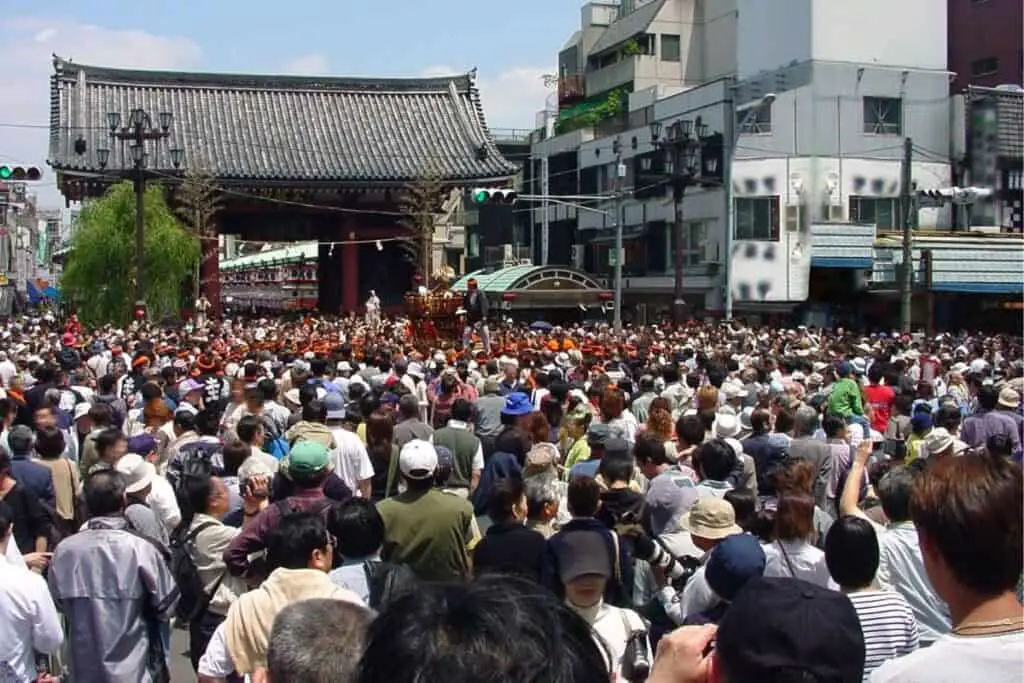
In addition to these benefits, natto is also a great source of protein and rich in vitamins which means that it can help with keeping your skin, hair, and nails healthy. Think of it as an internal beauty treatment.
However, the health benefits of natto are not only superficial but it can also help your body to function by aiding with heart function and bone strength.
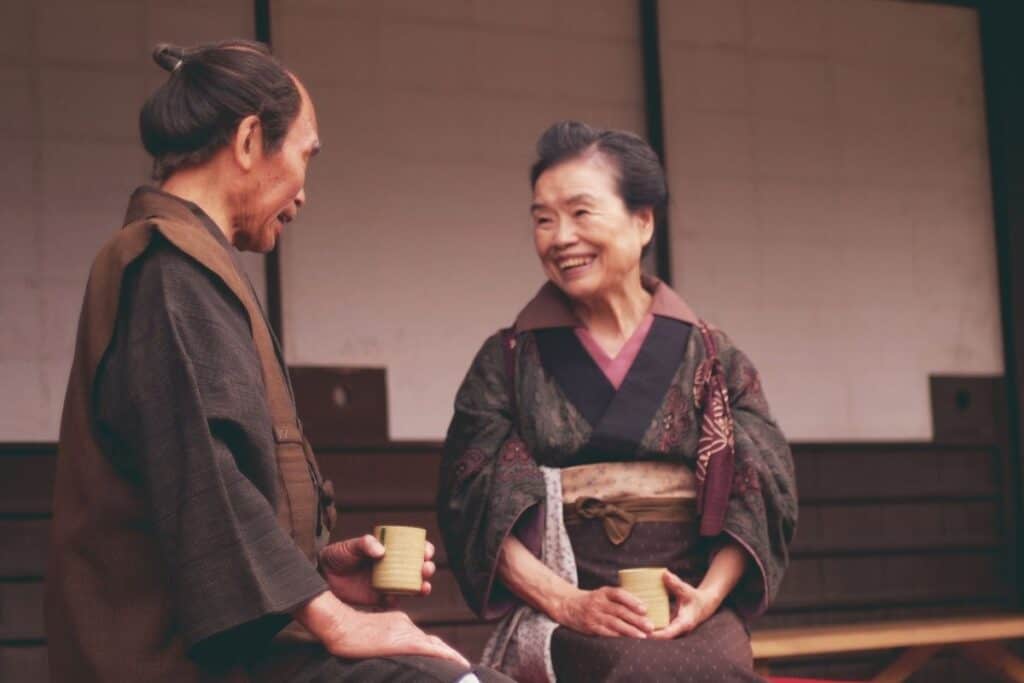
On top of all of this natto helps your body with digestion and allows you to better absorb nutrients which is a great bonus considering it is a probiotic that is full of great nutrients.
Natto is also low in calories so it can be a great way to help boost your intake of protein and vitamins without the added calories.
So, not only can natto be considered a delicacy but it can help with both internal and external health and beauty.
The appeal of natto
Natto is certainly not a food that appeals to everyone. Not only is its texture very sticky but it also gives off a very distinctive smell. If you are determined to receive the health benefits of natto then you may need to take some time to acclimate yourself to the taste of natto.
The smell of natto is often compared to the strong smell of beer or fermented beverages, which is certainly not a smell that many people seek out when choosing what to eat for breakfast.
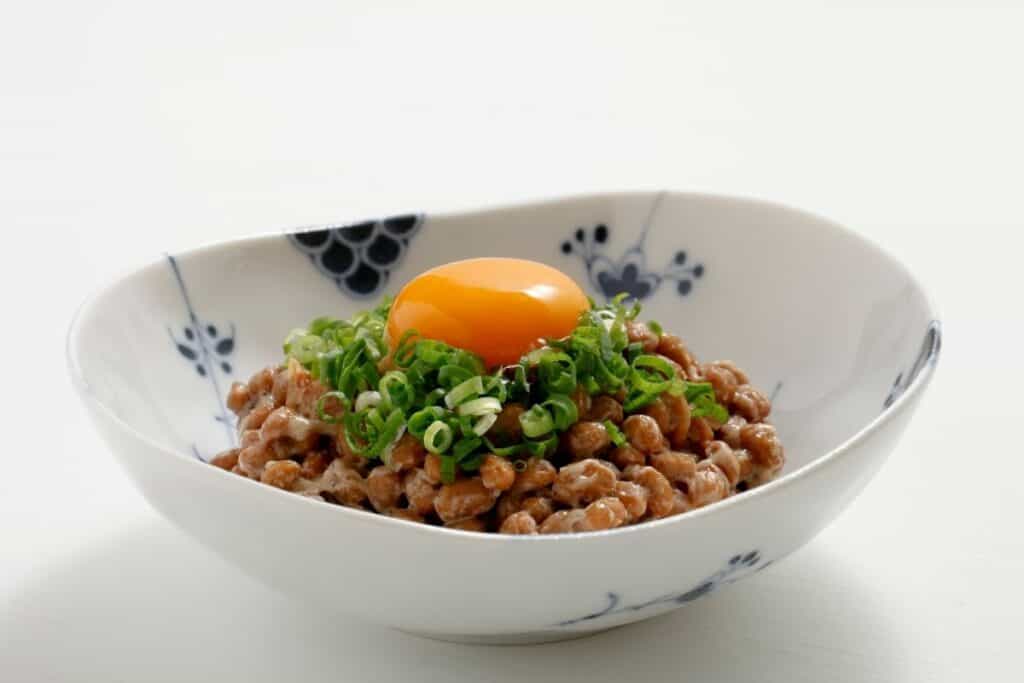
If you can get over the strong pungent smell of natto then you will also need to get used to the sticky texture. However, the texture is usually not the biggest turn off of natto, the smell is.
Although many people are easily put off of natto by its texture and smell if you can get over these then many say the taste of natto is actually delicious. At this point, it will make sense to you why people eat it for breakfast every morning in Japan. Many people will eat natto as part of a bigger meal with rice, green onion, and soy sauce.
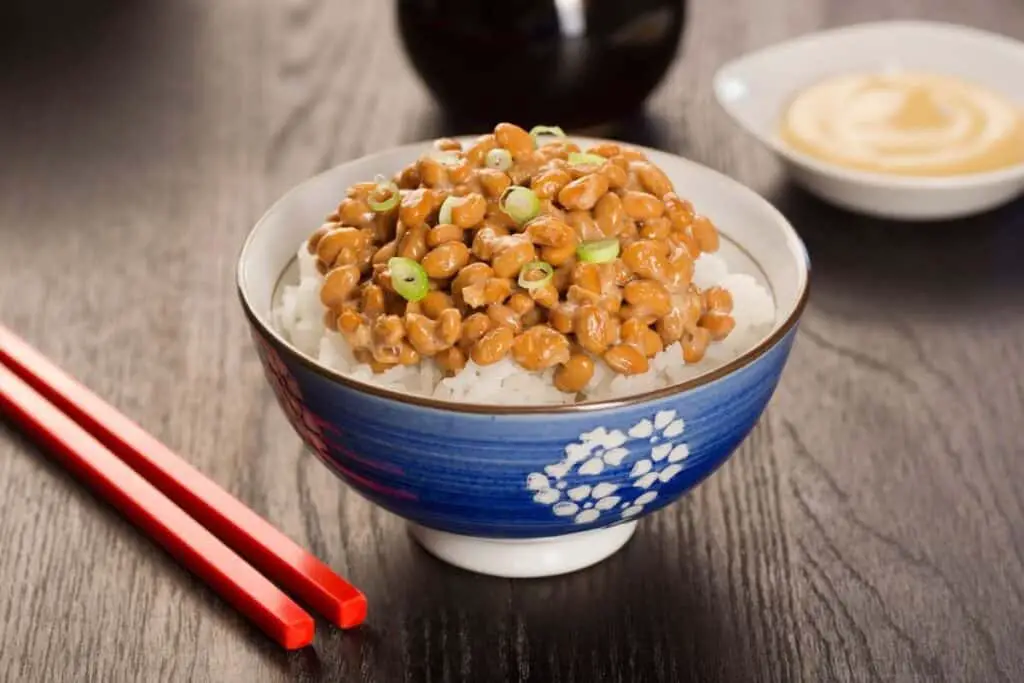
Eating this for breakfast can help give your body a boost for the day as just 100g of natto contains 8.6 grams of iron. It also contains vitamins B6, B12, C, K, and magnesium, calcium, zinc, and phosphorous.
Finding natto
Due to its popularity, natto is pretty easy to find in Japan. These fermented soybeans can easily be bought at any convenience store or supermarket and are not expensive, costing, on average, 100 yen for either three or four packs.
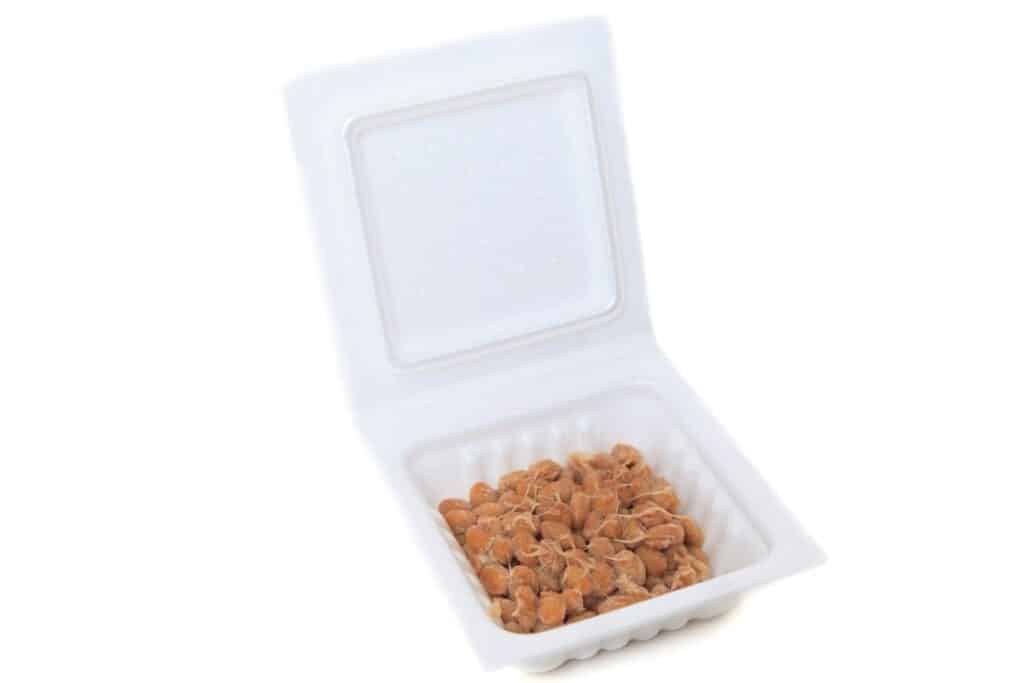
Although there are two different types of natto (made from large soybeans or small soybeans) the most popular version is kuromame natto (the type made from small soybeans).
There are many different variations on this dish, such as a version with black soybeans, but typically they all come with sauce and a type of Japanese mustard.
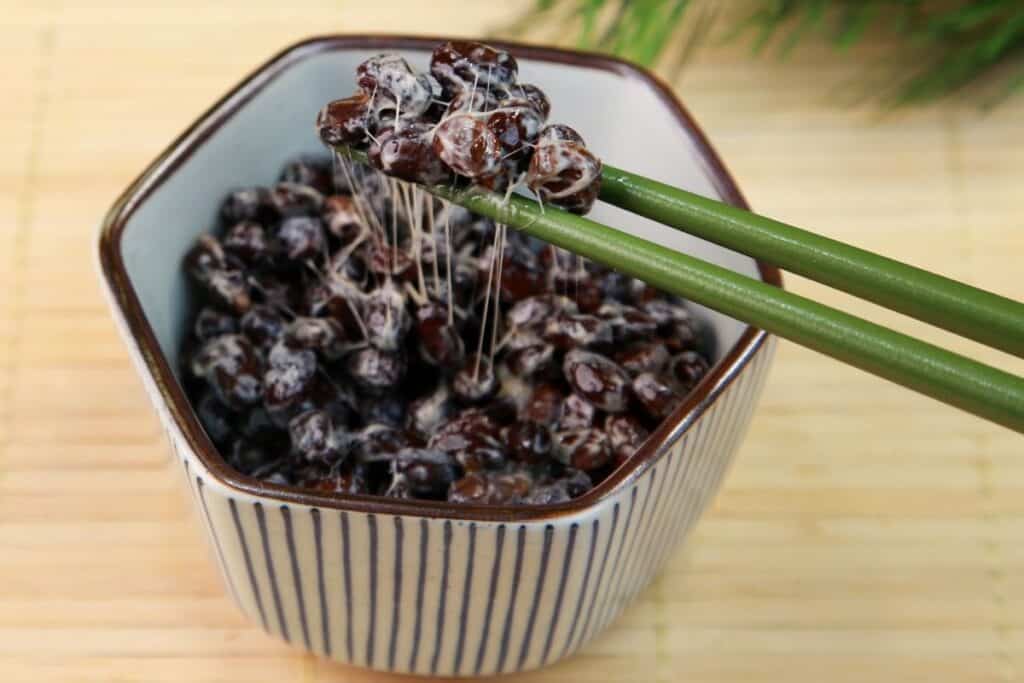
Conclusion
Natto is a breakfast food that divides people in Japan. If you can get over the smell and texture then the taste will make for a delicious meal. It will also give you a great health boost thanks to its abundance of vitamins and the fact that it is a probiotic.
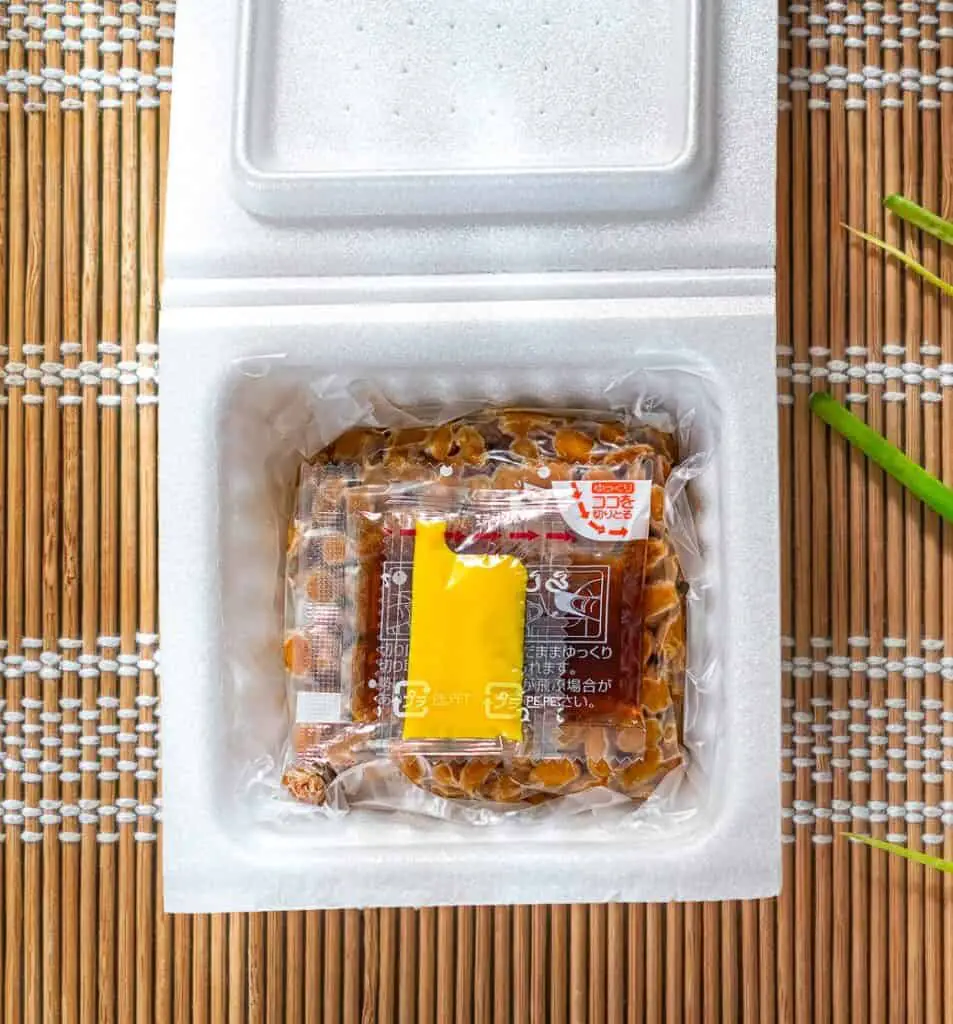
When making natto there are two different types of soybean to choose from: large or small. If you are a beginner making natto then you should probably start out using large soybeans as they become less sticky when mixed. Or, if you would simply prefer your natto a little less sticky opt to buy one made from larger soybeans.
Alternatively, if for you it is the sticker then better then look for the natto dish called “hikiwari”. This dish uses soybeans that have been crushed before being fermented, allowing them more surface area for the bacteria to adhere to. This results in the strongest-tasting and sickest type of natto possible.

